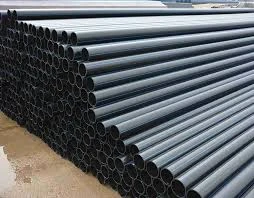Nov . 04, 2024 18:51 Back to list
HDPE Welding Rods for Strong and Durable Plastic Joining Solutions
Understanding HDPE Welding Rods The Essential Guide for Welding Applications
High-Density Polyethylene (HDPE) is one of the most popular types of plastic used across various industries due to its strength, durability, and resistance to chemicals and environmental stressors. It is commonly utilized in manufacturing items like bottles, pipes, and containers. As the demand for HDPE products continues to rise, so does the need for efficient welding techniques to join HDPE components. One of the key elements in this process is the HDPE welding rod.
What Are HDPE Welding Rods?
HDPE welding rods are specialized rods used to weld and join two pieces of HDPE material together using heat. These rods are made from the same high-density polyethylene material, ensuring compatibility during the welding process. HDPE welding rods come in various sizes and diameters, allowing for different welding applications, from repairing small items to creating large fabrications.
Importance of HDPE Welding Rods
The use of HDPE welding rods is crucial for several reasons
1. Material Compatibility Since the rods are made from HDPE, they melt and bond effectively with the HDPE materials being joined. This ensures a strong, cohesive weld that maintains the integrity of the products.
2. Durability HDPE is known for its strength and resistance to impact and chemicals. When used properly, HDPE welding rods create joints that are as robust as the original materials. This is especially important in industries where the integrity of the welded product is essential, such as in construction, automotive, and packaging.
3. Versatility HDPE welding rods can be used in various applications, including repairing damaged parts, creating custom shapes, and joining different HDPE components. This adaptability makes them a favorite among fabricators and repair technicians.
4. Cost-Effectiveness Using HDPE welding rods to repair or fabricate items can be more economical than replacing damaged components. This cost savings is especially beneficial for businesses looking to minimize downtime and reduce operational costs.
Welding Techniques Using HDPE Rods
There are primarily two welding techniques employed when using HDPE welding rods extrusion welding and butt welding.
hdpe welding rod

Extrusion Welding
Extrusion welding involves using a welding gun that feeds the HDPE rod into a heated nozzle. The nozzle melts the rod while simultaneously fusing it into the joint between the two HDPE parts. This technique is ideal for welding thick materials or large areas. Extrusion welding is commonly used in applications such as tank fabrication, geomembrane installation, and pipe repair.
Butt Welding
Butt welding is a process where two HDPE parts are placed end to end and heated until they reach a molten state. The melted surfaces are then pressed together, allowing them to fuse as they cool down. This method is often employed for joining pipes, where a strong and airtight seal is essential.
Best Practices for Using HDPE Welding Rods
To ensure successful welding with HDPE rods, it is essential to follow best practices
1. Surface Preparation Before welding, clean the surfaces of the HDPE materials to remove dirt, grease, and contaminants. This step ensures a strong bond.
2. Proper Temperature Understanding the melting temperature of HDPE is critical. Typically, the welding equipment should be set to between 400°F to 450°F (204°C to 232°C) to effectively melt the rod and the substrate.
3. Controlled Speed When using extrusion welding, maintain a consistent speed while feeding the welding rod. Too fast could lead to insufficient bonding, while too slow could cause overheating and degrade the material.
4. Cooling Time Allow adequate cooling time after welding to ensure the joint achieves maximum strength. Rushing this process can lead to weak joints.
Conclusion
HDPE welding rods are indispensable tools for anyone working with high-density polyethylene. Their compatibility, durability, and cost-effectiveness make them the preferred choice for a myriad of applications. Understanding the intricacies of HDPE welding techniques will enable fabricators and repair technicians to produce strong, reliable joints that meet the demands of modern industries. With the right practices in place, welding with HDPE rods can lead to efficient and lasting results, ultimately driving productivity and innovation in various fields.
-
High-Quality PPR Pipes and Fittings Durable ERA PPR & PVC PPR Solutions
NewsJul.08,2025
-
Black HDPE Cutting Board - Durable, Non-Porous & Food Safe HDPE Plastic Cutting Board
NewsJul.08,2025
-
High-Quality CPVC Panel Durable HDPE & PVC Panels Supplier
NewsJul.08,2025
-
Double PE Welding Rod Supplier - High Strength, Durable & Versatile Welding Solutions
NewsJul.07,2025
-
High-Quality PVC-O Pipe Supplier Durable 75mm PVC Pipe & Connections Leading PVC Pipe Company
NewsJul.07,2025
-
HDPE Drainage Pipe Supplier – Durable & Corrosion-Resistant Solutions
NewsJul.06,2025

